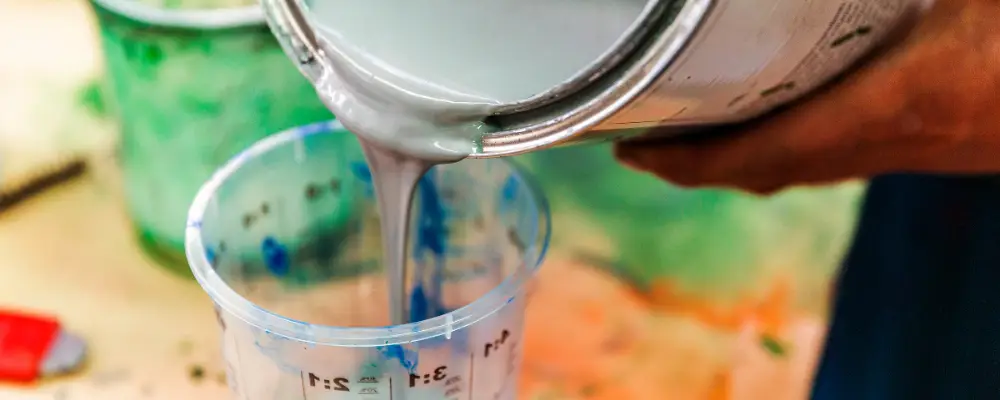A primer is a layer added as a surface base before being painted. It helps the paint to adhere properly, even on slightly rough surfaces. Primers also seal porous surfaces, prevent stains, and reduce the visibility of old paint underneath. Additionally, they improve the paint job’s durability and minimise the need for frequent touch-ups.
Latex primers are frequently used in many painting applications. It can also be used on masonry, wood, and plaster surfaces. It covers up stains and some imperfections on the wall easily. In this article, we will explore the composition, application, and process of using latex primer in detail.
What is a Latex Primer?
Latex primers are water-based primers which are a good choice for interior and exterior applications. They emit fewer odours compared to other types, making them a better option for paintwork. However, it is important to make the surface clean or smooth before applying the latex primer, as it performs better on a clear surface than on an oily or greasy surface.
Latex primer works as an adhesion material, providing a base for your top finish coat, i.e., paint. Most paintwork requires more than two coats to ensure proper bonding of the new paint with the wall and to cover any previous colors. Latex primers are flexible for any wall and less likely to crack or peel.
Why Do You Need a Primer Before Painting?
Before your painting process, priming is essential for getting better painting outcomes. The crucial aspects of priming are as follows:
- Increased adhesion property:
Primers are widely used for their sticking property, as they help to bind the paint tightly to the surface. If you ignore this step, it may cause the paint to start peeling off within a few days, potentially leading to costly repairs.
- Uniform Surface:
Primers provide a uniform surface by filling the porous surfaces of the drywall or wood. If you skip priming, then the painting would be inconsistent and unfinished.
- Seals and Protect the Surface:
It acts as a protective barrier to prevent porous surfaces and blocks staining of the old paint.
- Good Coverage
A well-primed surface may provide evenly distributed paint across the surface and avoid additional coats to get a super smooth surface. So prime your surface before painting your wall to get good coverage.
Applications of Latex Primer
Here are the various applications of latex primer:
- Latex primer seals the voided surfaces on new drywall and ensures even absorption.
- It can also be used on wooden surfaces to provide a smooth surface without any cracks.
- It removes stains like watermarks, colours, and oil stains from the surface and avoids bleeding through the new top coat.
- Latex primers are used on masonry priming works, including concrete or bricks.
- Latex primers are also used on metal surfaces, interiors, and exterior paintwork, covering up dark paints, and fixing small holes and small repairs.
Pros of Latex Primers
- As it is a water-based primer, it is simple to use for cleaning and application processes.
- Latex primers dry more quickly than oil-based primers, which makes it easy for several coatings of paint to be applied.
- Latex primers are good for interior work because they don’t release any dangerous gases or scents.
- It is flexible for applying on a variety of materials, including plasterboard, metal, and wood.
- It is fireproof.
- Latex primers are mostly available in low VOC (volatile organic compounds) or zero VOC compounds.
Cons of Latex Primers
- Not efficient in blocking all stains: Compared to oil-based primers, latex primers are inefficient in removing all the stains on the surface.
- Not suitable for glossy surfaces: Glossy surfaces are not suitable for absorbing latex primers. The adherence quality of the latex primer may be less on glossy surfaces.
- Less durable: Latex primers are not as durable as oil-based primers and may require frequent touch-ups.
- Turn yellow over time: It is unsuitable for long periods as it turns pale yellow over time. The quality of the final coat may be affected due to this nature.
- Appearance of brush strokes: Brush strokes may be visible on the surface due to their quick drying nature.
- Sensitive to sudden temperature changes.
How to Apply a Latex Primer?
Applying latex primer involves several steps as follows:
What to do
- Step 1: Clean and clear the surface with a cloth or sheet to remove any dust. Primers won’t stick to the surface if it has dust particles.
- Step 2: Tape your edges to ensure clean lines with no messy edges. It gives a professional completeness to the paintwork.
- Step 3: Now apply the latex primer to get a super-finish coat. It creates a smooth base for promoting adhesion and a wonderful top coat of paint.
- Step 4: Allow the latex primer to dry for at least 2 hours.
- Step 5: Now apply the paint you want to your wall.
- Step 6: Again, repeat the process of drying.
- Step 7: Now remove the tape and your work is done.
Conclusion
On the whole, latex primers are a wonderful option to cover up any small repairs or holes on walls, ceilings and other surfaces. They can also be used for transitioning new paints on the wall and are very good adhesion materials that provide an impressive final top coat.
FAQs
Each project requires different coatings of latex primer. Typically it involves more than 2 coatings for a wall or ceiling surface.
The average shelf life of the latex primer is two to three years. It may depend on the maintenance and storage of the primer.
As it is water-based, latex primers are easily washable with water and soap.

